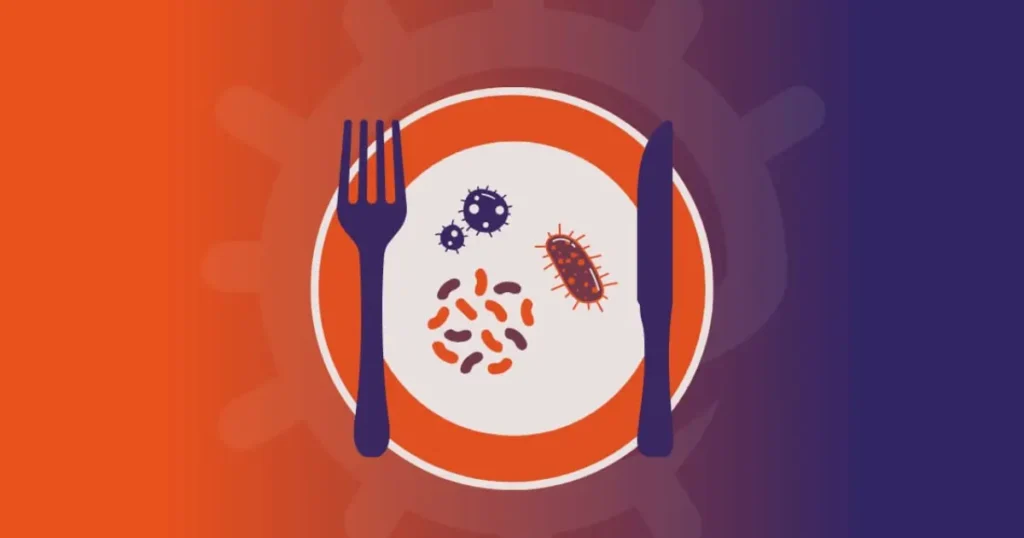Foodborne Diseases : How Hydroponic Farming Reduces the Risk
Table of Contents
ToggleIntroduction
Food safety is a global concern, with foodborne diseases affecting millions of people annually. Contaminated fruits and vegetables are a major cause of these illnesses, leading to severe health consequences. Traditional farming methods often expose crops to harmful bacteria, fungi, and pesticides, increasing the risk of contamination. However, hydroponic farming has emerged as a revolutionary technique that significantly minimizes these risks. By eliminating soil, controlling environmental factors, and reducing exposure to pathogens, hydroponics offers a safer and more sustainable alternative to traditional agriculture.
Understanding Foodborne Diseases
Foodborne diseases occur due to the consumption of contaminated food and water. They are caused by bacteria, viruses, parasites, and chemical substances that can lead to gastrointestinal infections, severe dehydration, and, in extreme cases, even death. Some of the most common foodborne pathogens include:
Salmonella
Found in raw produce, poultry, and eggs, it can cause severe food poisoning.
E. coli
Often linked to leafy greens and undercooked beef, it leads to diarrhea and kidney complications.
Listeria
Affects dairy products and processed meats but also contaminates fresh produce.
Norovirus
Highly contagious and spreads through contaminated food, leading to vomiting and diarrhea.
What is Hydroponic Farming?
Hydroponics is a method of growing plants without soil, using nutrient-rich water solutions instead. This technique can be implemented in various settings, from indoor farms and greenhouses to vertical farming systems. Hydroponics maximizes space efficiency while reducing dependency on traditional farmlands.
- Deep Water Culture (DWC): Plants are suspended in nutrient-rich water.
- Nutrient Film Technique (NFT): A thin film of nutrient solution continuously flows over the roots.
- Aeroponics: Plant roots are misted with a nutrient solution for maximum absorption.
- Drip System: Nutrient solutions are delivered to plants through a controlled drip mechanism.
- Ebb and Flow System: A timed system that floods and drains nutrients to plant roots.
How Hydroponic Farming Reduces the Risk of Foodborne Diseases
Hydroponic farming is a soil-free agricultural method that allows plants to grow in nutrient-rich water solutions. This innovative approach offers multiple benefits that significantly lower the risk of foodborne diseases.

Elimination of Soil-Borne Pathogens
.
Traditional farming involves soil, which harbors numerous bacteria, fungi, and parasites that can infect crops. In contrast, hydroponics eliminates soil, removing a primary source of contamination. This significantly reduces the likelihood of foodborne pathogens affecting produce.
Controlled Environment for Hygiene and Safety
.
Hydroponic systems operate in controlled environments such as greenhouses or vertical farms. These enclosed systems prevent exposure to external contaminants, including polluted water, animal waste, and airborne bacteria. By maintaining optimal conditions, farmers can ensure cleaner and safer food production.
Reduction of Chemical and Pesticide Use
.
Pesticide residues on fruits and vegetables contribute to foodborne illnesses and long-term health problems. Hydroponics minimizes the need for chemical pesticides because plants are grown in a controlled setting where pest infestations are easier to manage. Many hydroponic farms also use organic or biological pest control methods, making produce safer for consumption.
Clean and Filtered Water Supply
.
Waterborne pathogens like E. coli and Salmonella can infiltrate traditional irrigation systems, contaminating crops. Hydroponic farms use filtered, purified, and recirculated water, drastically reducing the risk of bacterial and viral contamination. The closed-loop system prevents waterborne diseases from spreading through crops.
Minimal Human Handling Reduces Contamination
.
Food contamination often occurs due to poor hygiene practices during harvesting, sorting, and packaging. Hydroponic farms incorporate automated systems for irrigation, nutrient delivery, and harvesting, reducing the need for human contact with crops. This automation minimizes the chances of introducing pathogens through human handling.
Faster Growth and Fresh Harvest Reduces Spoilage
.
Hydroponically grown crops tend to grow faster due to their optimized nutrient supply. This leads to quicker harvests and fresher produce, reducing the time food spends in storage or transportation. Shorter storage periods minimize the chances of bacterial growth and food spoilage, further lowering the risk of foodborne diseases.
Urban and Localized Farming Decreases Exposure
.
Many hydroponic farms are located in urban areas, closer to consumers. This reduces the transportation time and the need for extensive handling and storage. Fresher produce with a shorter supply chain is less likely to be exposed to harmful contaminants before reaching the consumer.
The Future of Food Safety with Hydroponics
The growing concern over foodborne diseases has prompted a shift towards safer and more sustainable farming methods. Hydroponic farming is leading this change by providing:
- Higher food safety standards through controlled environments.
- Reduced contamination risks by eliminating soil and using purified water.
- Eco-friendly farming that reduces chemical usage and conserves water.
- Year-round fresh produce with minimal exposure to external pollutants.
With technological advancements and increased awareness of food safety, hydroponic farming is set to revolutionize agriculture and significantly reduce the global burden of foodborne diseases.
-
Bacteria: The Remarkable Role of Microbes for Growing Plants in Hydroponics
-
Hydroponics: The Rookie Mistakes of Growing Plants
-
Chlorine: The Incredible Key to Thriving Hydroponic Plants
-
Molybdenum: Astonishing Importance for Hydroponic Plant Growth
-
Boron: The Astonishing Importance for Plants Growing in Hydroponics
-
Copper: A Powerful Element for Hydroponic Plant Growth
-
Zinc: The Powerful Secret to Hydroponic Plant Growth
-
Manganese: Essential role for Hydroponic Plant Growth
-
Iron: The Crucial Role of Iron in Hydroponic Plant Growth
-
Sulfur: The Vital Key to Thriving Hydroponic Plant Growth
-
Magnesium: The Crucial Role for Thriving Hydroponic Plants
-
Calcium: The Critical Importance for Thriving Hydroponic Plants
Conclusion
Foodborne diseases remain a major public health challenge, but hydroponic farming presents a powerful solution to mitigate these risks. By eliminating soil-borne pathogens, maintaining a controlled environment, and reducing chemical use, hydroponics ensures the production of safer, cleaner, and healthier crops. As the demand for food safety grows, adopting hydroponic techniques will play a crucial role in protecting consumers and shaping the future of sustainable agriculture.

